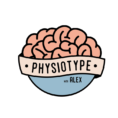Child Development
No official studies have been done yet connecting Physiotype to different stages of childhood development, however some predictions can be made using the Meta/Mesa dichotomy as a basis.
Below are some examples of how we expect type to affect children’s developmental stages.
Phil Zelazo's Dimensional change card-sorting task (DCCS)
In the Dimensional Change Card Sorting Task (DCCS), children are first asked to sort cards by one attribute (color in this video), but are then required to look for a second attribute to sort cards (in this case shape).
By the age of 3, children are able to sort cards based on a single attribute, but are generally unable to switch to sort the cards based on a second attribute. However, by the age of 5 children are able to sort cards based on one attribute and can then switch to sorting cards based on a second attribute.
There is about a 2 year gap between when – on average – children are able to perform the first task and when they are able to perform the second task.
If you take a look at the video, the boy is first asked to sort the cards given by the (AC) woman by a single attribute – color. The boy does a great job at this! Each card is defined by this one attribute in the boy’s mind. However, things get interesting when the boy is asked to switch to sorting the cards by a different attribute – shape.
When the boy is instructed to sort the cards by shape (shapes which he already knows how to identify), he’s continues to sort the cards by color. This happens even after the boy confirms that he listened to the directions.
We are interpreting this behavior as Mesa in nature. The cards as a whole have become defined by the first attribute – color. When the child is asked to suddenly notice and define a different attribute in the cards the child has a great deal of trouble, being unable to separate the card from the first attribute. The child doesn’t see a card that is blue and shaped like a flower, he sees a blue card. The boy doesn’t see a card that is red and shaped like a truck, he sees a red card. The entity is the attribute.
As we’ve discussed in other places, identifying and describing attributes is associated with Meta behavior. The Physiotype group has long believed that children start out Mesa and gradually become more Meta with age. At around the age of 60, it appears that adults gradually become more Mesa again, less concerned with individual attributes of the different things and aspects of their lives, and more concerned with the whole of whatever they are focused on.
Our prediction is that children which possess Meta cognitive functions – specifically Ne and Si – will be able to pass Phil Zelazo’s Dimensional Change Card-Sorting Task at a younger age than those without these functions. Much in the same way Ni and Se would give children an edge in Mesa tasks, Ne and Si should be able to give children an edge in Meta tasks like this one.
Infant, control thyself
Human’s are the most Meta creatures on the planet. Even a Delta type (types with only Mesa cognitive functions) is more Meta than even the most Meta of cetaceans or primates. This is demonstrated from an incredibly young age.
Here we see an experiment meant to demonstrate a toddler’s ability to self-regulate his own behavior based on how he perceives the emotional reaction of an adult to be.
So to break down this interaction: (1) the child see’s an adult playing with a beaded necklace, (2) the child sees a second adult respond negatively to the first adult playing with the necklace, and (3) the child responds by not playing with the necklace.
The child is referencing an interaction that did not involve him to make an inference about how he should behave. This is a common way that humans self-regulate their behaviors. Individual A references B who references C who references A until you have a loop of individuals referencing each other until homogeneity occurs.
While all humans display this ability and propensity toward Meta social behaviors, types with the cognitive functions Fe and Ti are by far the best at this task. Therefore we predict that toddlers who have these functions will demonstrate this behavior earlier in their development.
Find Out Your Personality Type
Having trouble figuring out your Physiotype? Want to see if your Physiotype matches your MBTI or Socionics type?
